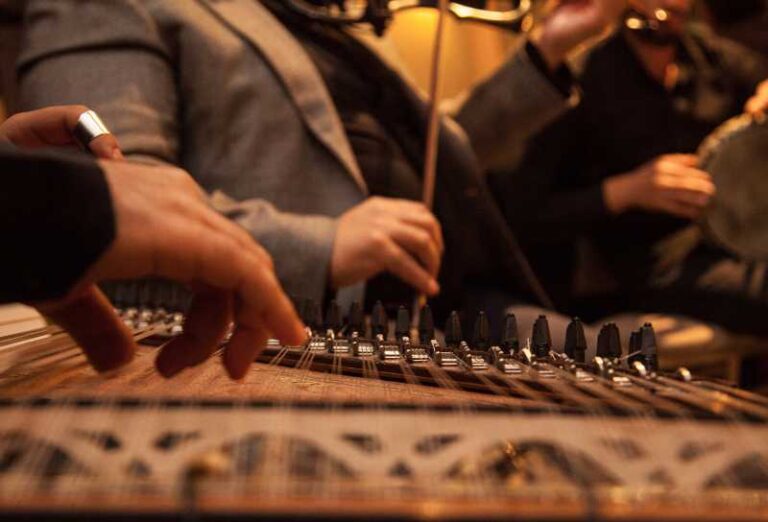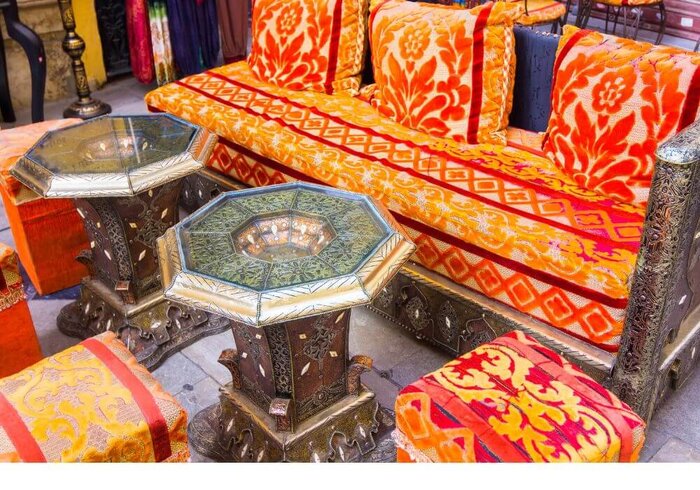Arab Cuisine 101:

Arabic cuisine has long captivated the senses with its aromatic and fragrant flavors, beckoning millions of visitors from around the world to savor the delectable dishes of the Middle East.
This culinary tradition boasts a diverse array of recipes, often reminiscent of Mediterranean cuisine, but distinguished by a unique spicy twist that sets it apart on the global culinary stage.
Table of Contents
Arab Cuisine Origins:
Arab cuisine has a long history dating back to ancient civilizations in the Middle East.
It has been influenced by various conquerors, new settlements, and trade with Europe and Asia, and has evolved over time.
Arab cuisine shares some ingredients with Mediterranean cuisine due to its geography and trading history, but also has its own unique flavors.
Food is an important part of Arab culture and customs.
Cooking Methods Used in Arabic Cuisine:
A lot of the reasons why cooking methods are popular in each region depend on what people have.
For instance, some cooking methods require a lot of fire, wood, coal, and attention which is very costly.
But cooking methods in Arab cuisine dictate the flavor and can change how any dish tastes.
Horizontal slow turning grill:
The Eid al Adha feast is very popular for the lamb sacrifice and you can often find large families feasting on a large lamb that has been slow cooking for hours on a horizontal rotisserie grill.
The lamb is marinated and spices up and then a cook will insert a large rod inside the lamb along the body.
This rod is placed over some coals and rocks for hours until the meat starts to come right off the bone with no effort.
Grilling:
Grilling in Arabic cuisine uses a large pot called mejmar which is used to put coals and stones. The meat is then placed on a grill on top of the mejmar.
Long slow cooking:
Crockpots are used a lot in Arabic cuisine due to their convenience and ability to slow cook meat for long periods of time.
Popular Arab Cuisine Ingredients and Dishes:
There are a lot of ingredients in Arabic Cuisine and they all can depend on the region. However, there are a few basics that you can always find in an Arabic food item list.
Flatbreads خبز Khubz:

Perhaps the most common item in Arab cuisine is bread. This is not only used for eating, but it actually completely replaces cutlery.
You would often see people using bite-sized bread in order to cut meat and use it as a carrier for the sauce or vegetables.
While this is seen as unsanitary, it’s actually quite genius because the bread absorbs the sauce very well and carries it with the meat.
Most dishes are cooked very slowly and over long periods of time which means that the meat, as well as the vegetables, are so delicate that they fall apart just by touching them.
Bread is usually dipped in olive oil with some spices such as oregano and rosemary.
Tahini طحينة sesame paste:
Tahini paste is a popular dip in Arab cuisine. It is made from ground sesame seeds mixed with lemon juice and other ingredients.
Tahini is a key ingredient in hummus and can also be used as a spread for bread or as a topping for shawarma.
It is a versatile and flavorful addition to many dishes in Arab cuisine.
Hummus حمص :

Hummus is a popular and beloved food that is made with a combination of ingredients including olive oil, tahini, chickpeas, lemon juice, spices, parsley, garlic, and sometimes paprika.
It is very flavorful and can be used in a variety of ways, particularly as a dip. Hummus is often spread in pita bread used for shawarma or served as a dip for falafel.
It is a delicious addition to many meals.
Fresh yogurt:
Another popular item in any Arabic or Middle Eastern household is yogurt.
It’s often used to accompany meals but it also goes great to marinate meats.
Za’atar زعتر

This is a spice that dominates almost every dish you will eat. It’s very aromatic and has a distinctly elegant and nutty taste. It’s used for meat, bread, or even sauces.
Ras al hanout رأس الحانوت
This is a spice mix that is used by a lot of Moroccan households. It can consist of up to 50 species and every merchant has its own combination.
The taste you get with this spice is very unique as it’s hinted at by its name which literally translates “top of the shelf”.
Lamb meat:
The most popular meat in Arab cuisine is definitely lamb meat and this is partly due to Islamic and geographic circumstances.
Lamb plays an important role in Islamic scripture as it’s necessary for the Eid al Adha feast.
Saffron زعفران:
Saffron is one of the most expensive spices you can find. You can make any dish a thousand times better with just a few threads of this spice. It’s incredibly fragrant and a must for feasts.
Couscous كسكس:

Couscous is a popular dish in North Africa, particularly in Morocco, where it is often served on Friday for lunch.
The dish consists of couscous, a sauce, and seven vegetables such as carrots, potatoes, pumpkin, zucchini, turnips, and cabbage, as well as chickpeas.
The meat is stewed for hours and served hot on top of a large plate called a gessaa. There is also a variation of couscous that is even more popular, which includes caramelized onions and raisins.
In this version, the caramelized onions replace the vegetables, but the stewed meat is still a staple.
The onions are slow-cooked for several hours, releasing all their sweetness and adding depth of flavor to the dish.
Couscous is a hearty and flavorful meal that is enjoyed by many people in North Africa.
Shawarma شاورما:

This dish, known as shawarma, is internationally recognized as one of the best comfort foods.
It is made by grilling meat on a vertical rotisserie and serving it in thin slices on pita bread that has been generously slathered with garlic mayo, hummus, and garnished with cilantro and onions.
Some people also add cucumbers to balance out the acidity.
Shawarma is a delicious and satisfying meal that is enjoyed by people around the world.
Kefta:

Kefta is a delicious example of how spices can make food special. It’s made by mixing ground lamb with tasty spices like paprika, cumin, pepper, salt, and cilantro.
This mixture can be shaped into different things, like pita sandwiches or meatballs. So, you can enjoy kefta in many yummy ways!
Conclusion
Arabic cuisine is a blend of history, culture, and taste. It evolved over time from ancient times and different cultures, creating a treasure of flavors.
With dishes like slow-cooked meats and fragrant spices, Arabic cuisine takes us on a delicious journey.
Whether you like strong flavors or subtle ones, the food from the Middle East brings people together.
Each dish tells a story of tradition, celebration, and sharing. As you enjoy Arabic cuisine, you’re exploring not just tastes but also the culture behind it.






